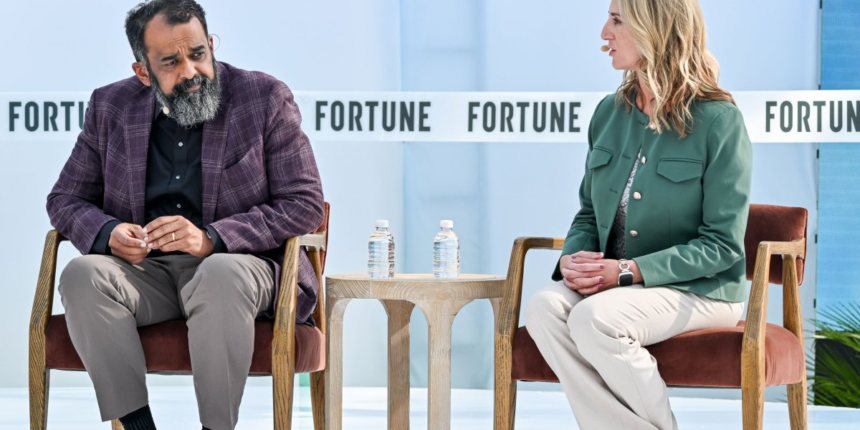Honeywell says that 20% of the company’s software code is written by GitHub Copilot and other AI-assistant coding tools. But, does that mean that the industrial giant’s embrace of AI has corresponded with a 20% reduction in that team’s workforce?
No, according to Suresh Venkatarayalu, the chief technology officer and president of the company’s software-focused division, Honeywell Connected Enterprise. “What has changed is the type of developer skill sets,” said Venkatarayalu at the Fortune Brainstorm Tech conference held last week in Park City, Utah.
With less time needed to write code, Honeywell’s software developers can perform more complex work, including spending more time in the field with customers to solve their system integration needs.
For decades, the industrial sector has been embracing automation technologies that have made it easier to move goods across the factory floor, perform quality control inspections, and monitor machinery to predict when a fix may be in order before any breakdowns occur. Workers have also gotten more access to AI-enabled tools, helping recommend when supplies need reordering, predict demand from customers, and help handle repetitive back-office tasks.
“It’s huge change management,” Mineart said. The biggest challenges that they will need to solve will be related to both labor capability and labor availability, she added.
Venkatarayalu sees things slightly differently. In the U.S. and other developed markets, he believes that there is a labor shortage. But in higher growth regions, the problem is more focused on the skills gap.
“The only way to offset the labor shortage and a skills shortage is to augment with something, and that something is AI,” said Venkatarayalu.
Mineart said automation and AI can help move workers away from less safe, duller, and more repetitive tasks. “Those are jobs that robots, robotics, and technology can really do very, very well, alongside that human capability and that human creativity to get more productivity and safer work sites,” she said.
Caterpillar and Honeywell share some similarities in that they are both over a century old and are on the Fortune 500 (Caterpillar at 64, Honeywell at 119). But their AI journeys are evolving in different ways.
“When you think about bringing manufacturing back into the United States, we have to reimagine how we are going to do that,” said Mineart.
John Kell









